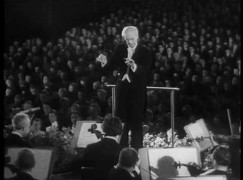Toronto Symphony gets out of jail
mainThe orchestra sneaked out a good-news annual report just before the weekend.
A projected deficit of C$4 to C$6 million has been turned into an operating surplus of C$831,540.
Apparently, all they had to do was scrap former CEO Jeff Melanson’s extravagant schemes.
Details here.






from the “details”:
“The rest of the $5M reduction in accumulated debt comes from the historical musical instrument collection, which the orchestra valued at $4.2M and is unlikely to depreciate, due to its historical classification.”
Can any accountants here explain to me how this collection, which the article doesn’t say has been sold for money, creates money to reduce debt?
http://www.theglobeandmail.com/news/national/tso-plans-to-sell-rare-viola-to-its-foundation-to-cut-deficit/article30279114/
Selling an instrument makes sense. Selling it to themselves, less so.
In the comments of the article I asked the same question and a more complicated, less comprehensible explanation was given about “recognizing” assets.
¯\_( ‘. ‘)_/¯
Very true. I honestly wouldn’t hope for a clear and concise answer to your question though. I stopped trying to understand the details when I read the term “creative accounting”, which in most cases seems to be accounting-jargon for ‘obfuscation’ and/or ‘elusion’.